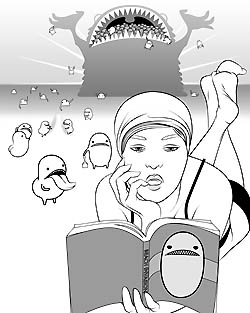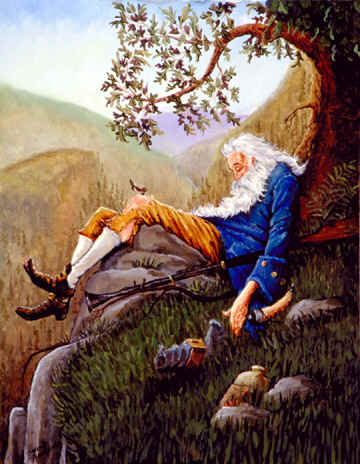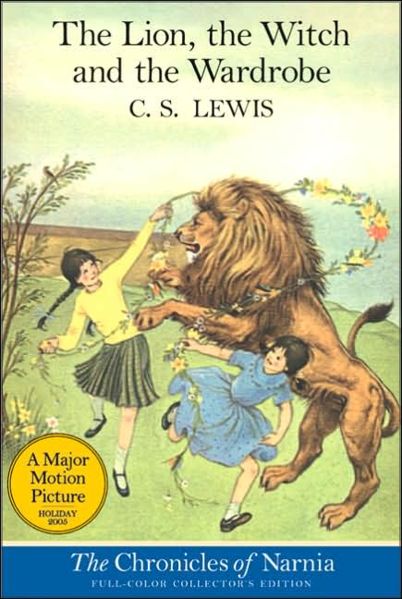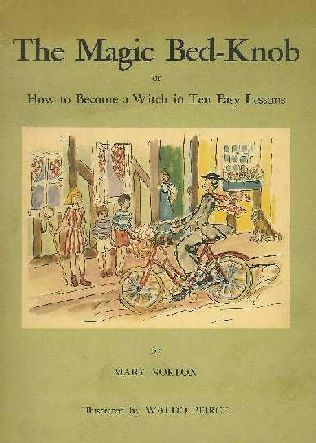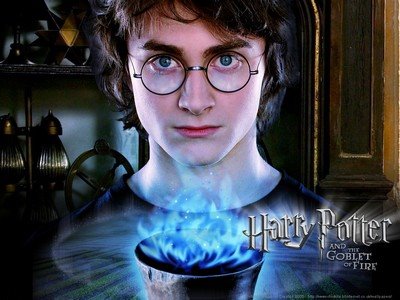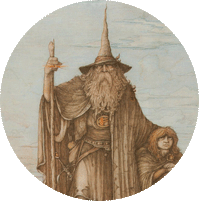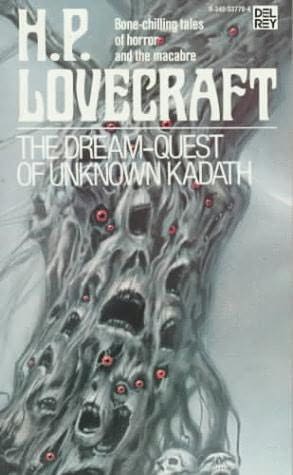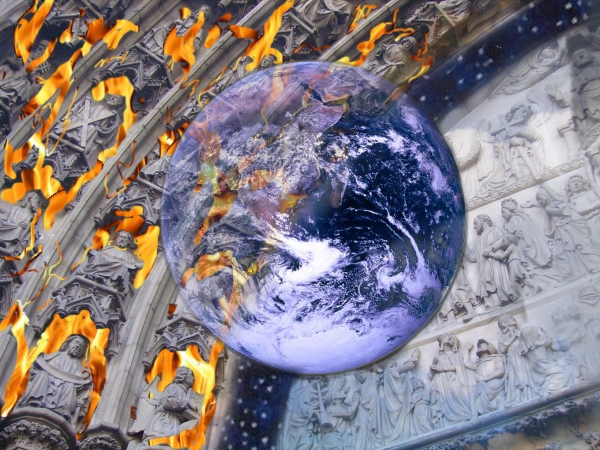|
Irvine Valley College: Online Literature Study of the School of Humanities and Languages Literature 110 - Popular Literature Spring 2013 - Ticket #62740 // Marjorie Coverley Luesebrink, MFA, Instructor
Unit 7b: Fantasy Adventures Harry Potter and the Sorcerer’s Stone, J. K. Rowling
Time Displacement Magic allows for fantastic things to happen in the Fantasy World, and often the events of this world can be faintly visible in the Real World for those of us lucky readers who get a glimpse. It also lets the author play with time and history - characters, objects, and events from any time in history can be blended together in the Fantasy World. In some cases, time would seem to be circular or to stand still. One example of time displacement is the short story (a fantasy) of Rip Van Winkle. Old Rip falls asleep and when he wakes up, twenty years have passed and the world is a far different place. In this case, it is hard to tell which is the magic world and which is the fantasy - but the issue of time compression gets clearer when we can look at very familiar versions of time displacement!
Rip Van Winkle asleep for 20 years! Although the time displacement in *Wizard of Oz* is not so clearly delineated, we do have much the same phenomenon. Dorothy goes to Oz when the tornado begins - and she seems to be there for days or months - but when she returns to Kansas, the storm is just blowing off into the distance! Another good example of Time Displacement is found in the *Chronicles of Narnia* - *The Lion, the Witch, and the Wardrobe.* Although the characters live long and eventful lives in Narnia, in the end, they are brought back to reality as children, again.
In another favorite Fantasy Adventure *The Magic Bed-Knob or How to Become a Witch in 10 Easy Lessons* (a childhood favorite of mine that became the movie *Bed-knobs and Broomsticks*) - we have both the entry to the fantasy world with the magic bed-knob and also time displacement. In the book, the characters travel back in time to find the sorcerer. [Note, too, the similarity to a school for Wizards and How to Become a Witch!]
Cover for *The Magic Bed-Knob* by Mary Norton, 1943. In *Harry Potter* the time displacement is everywhere - but it is much more ambiguous. First, we really don't know what year it is in the "Real" world - and, when we get to Hogwarts, we have a strange mix of very ancient and semi-contemporary. The school itself is modeled on the traditional British boarding school structure (the rules, the rituals) - and yet, the characters seem to exist in a kind of magical, mythical world in which all historical relevants co-exist. More than that, the objects of both worlds might come from almost any time period - and so we have strikingly modern elements existing alongside anachronistic relics from some magical past.
Thoroughly Modern Harry with the Goblet of Fire
The Quest No fantasy story is complete without a Quest - whether it be for the Holy Grail, The Sorcerer's Stone, The Goblet of Fire, or . . . .as in *The Wizard of Oz* - several characters are on a quest: Dorothy, the Scarecrow, the Tin Woodman, and the Cowardly Lion go on a quest for the way back to Kansas, brains, a heart, and courage respectively.
From Wiki - about Quests - In mythology and literature a quest — a journey towards a goal — serves as a plot device and (frequently) as a symbol. Quests appear in the folklore of every nation[1] and also figure prominently in non-national cultures. In literature, the objects of quests require great exertion on the part of the hero, and the overcoming of many obstacles, typically including much travel. The hero normally aims to obtain something or someone by the quest, and with this object to return home.[3] The object can be something new, that fulfills a lack in his life, or something that was stolen away from him. It can also be a lack in the life of, or something stolen from, someone with authority to dispatch him.[4] While the Quest is a straightforward motif, and is very much a part of the Harry Potter stories, it is interesting to note that Fantasy Fiction (as opposed to Folk Tale or Legend) often has a less-noticeably heroic hero! The essential difference between the fairy tale hero and the fantasy protagonist is that the latter often lacks heroic features, can be scared and even reluctant to perform the task, and can sometimes fail. The final goal of fantasy is seldom marriage and enthronement; in contemporary philosophical and ethical fantasy it is most often a matter of spiritual maturation. Fantasy also allows much freedom and experimentation with gender transgression. from fantasy
literature and fairy tales And we see this feature in Harry's character - although we, as readers, know he must eventually succeed, he is not hailed as the hero in early scenes. He can be frightened, make mistakes, and lose confidence. In this sense, he is a "Readable" Character" - one that his younger readers (and even older ones) might be able to identify with more solidly!
Cover for H.P. Lovecraft's *The Dream-Quest of Unknown Kadath* - 1970 The Combat Between Good and Evil Finally, we have the staple motif of the Combat Between Good and Evil. "Good" and "Evil" can be defined in various ways in both Folk and Fantasy literature. The Bibilical story of Adam and Eve is probably the best-know good-and-evil story! Essentially, in Fantasy Fiction - the good-evil axis is the same as the Clear-cut Value System that we have examined in other books! One of the least satisfactory elements of the Potter series, critics have charged, is the depth of the moral universe. I am including here a contrast between *The Lord of the Rings* and *Harry Potter and the Sorcerer's Stone* because it clearly states the argument about the treatment of "good and evil" in these books. This piece, by Brian M. Carney, comes from the Center For Religious Studies. An interesting source - but who best to make the argument about ethics and morality? [Note that this was written in 2001!]
The Battle Between Good and Evil The Battle of the Books - No contest. Tolkien runs rings around Potterby Brian M. Carney (Opinion Journal, November 30, 2001)Just when the menace of terrorism has darkened normal life and the
guns of war have sounded, moviegoers on both sides of the Atlantic are
turning out in huge numbers to see Harry Potter ride a broom across the
silver screen and fight . . . evil.
Tolkien's *Lord of the Rings* Continue to next page - to Unit 7c
Patterned Structure Reassuring Plot Intimacy of Style and Tone
Fantasy: Harry Potter and the Sorcerer's Stone: be sure to see J.K. Rowling's Official Website. A favorite among fantasy fiction readers for years has been The Lord of the Rings - and the entire series by J.R.R. Tolkien. (Note, here, the similarity of naming of "JRR" and "JK" - just another of Rowling's "slant reverences"!) C.S. Lewis blends fantasy and his own brand of Spiritual Humanism - many people are familiar with his Narnia series which has created a whole classic strain in fantasy literature. I do realize that there are many other sub-genres in fantasy fiction - and I will leave it to the students who have particular expertise in this area to help me fill it in! To see the amount of overlap in our "categories", we can take a good look at the 100 best Fantasy Fiction Books published by Fantasy 100: <http://fantasy100.sffjazz.com/>. On this list you will find not only Tolkien and Lewis, but others that we have in different categories such as Stephen King, Anne Rice (Interview with a Vampire), Bram Stoker (Dracula) [all in our Horror category], and Ursula K. LeGuin and Ray Bradbury (who we will find in our Science Fiction Category but also write Fantasy Fistion. There are some amazin authors here! Take a good look for your Research Paper!
Marjorie Coverley Luesebrink: write to me with questions!
Marjorie Coverley Luesebrink, MFA, your Instructor, is a Professor of English in the School of Humanities and Languages, Irvine Valley College, Irvine, California. See Online writing at Home Page. |
| MENUBAR: About Your Class // Class Syllabus // Lecture Notes // Reading List // Recommended Reading // Assignments // Grading Policies // Contact Your Instructor // Announcements // Discussion |
